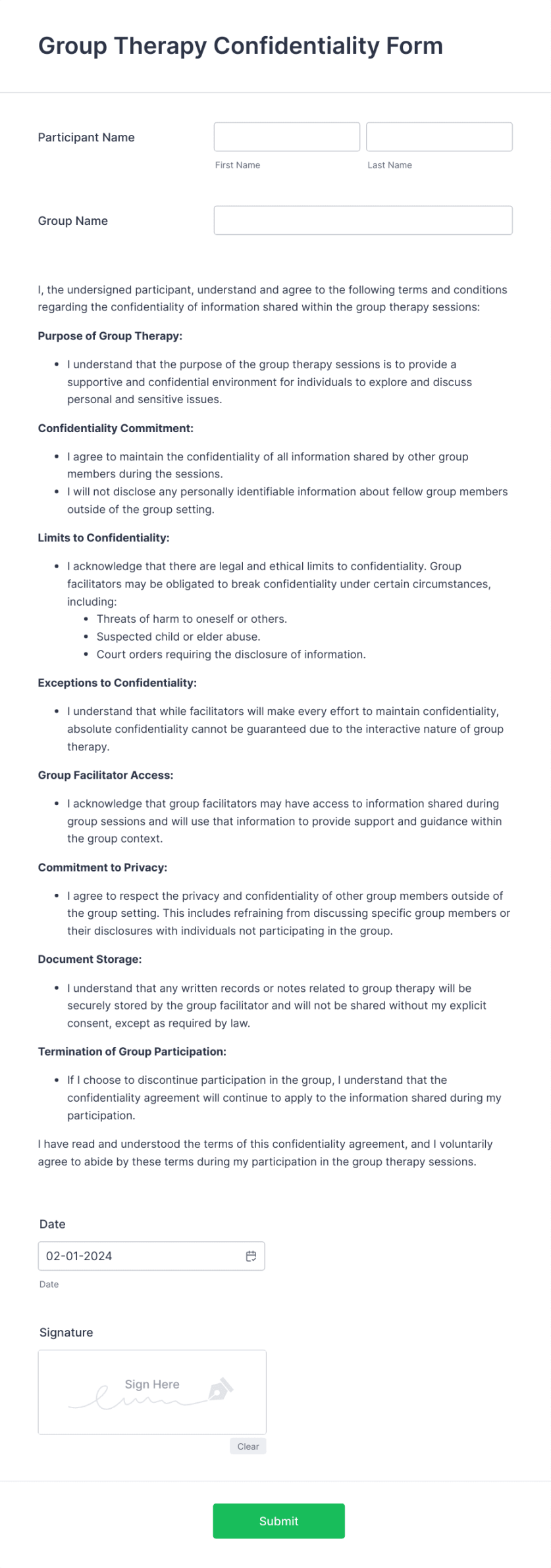A therapy confidentiality agreement template is a legal document that outlines the specific terms and conditions under which a therapist will maintain the confidentiality of a client’s personal information. It is essential for establishing trust and ensuring a safe therapeutic environment.
Key Components of a Therapy Confidentiality Agreement Template

1. Parties Involved: Clearly identify the parties involved in the agreement. This typically includes the therapist’s name and professional license information, as well as the client’s name and contact information.
2. Scope of Agreement: Define the scope of the agreement, specifying the types of information that will be considered confidential. This may include personal information, medical history, treatment plans, and any other disclosures made during therapy sessions.
3. Confidentiality Obligations: Clearly state the therapist’s obligation to maintain confidentiality of the client’s information. This should include a commitment to not disclose any confidential information to third parties without the client’s written consent, except as required by law.
4. Exceptions to Confidentiality: Outline any specific exceptions to the confidentiality obligation. These may include situations where there is a risk of harm to the client or others, or when required by law, such as in cases of child abuse or neglect.
5. Client’s Rights: Specify the client’s rights regarding their confidential information. This may include the right to access their records, request corrections, and receive a copy of the agreement.
6. Duration of Agreement: Indicate the duration of the agreement. This may be for a specific period or until the termination of the therapeutic relationship.
7. Termination of Agreement: Outline the conditions under which the agreement may be terminated. This may include mutual consent, breach of the agreement by either party, or the termination of the therapeutic relationship.
8. Governing Law: Specify the governing law that will apply to the agreement. This is typically the law of the jurisdiction where the therapy sessions take place.
9. Entire Agreement: State that the agreement constitutes the entire understanding between the parties and supersedes any prior or contemporaneous communications, representations, or agreements, whether oral or written.
10. Signatures: Include a section for the therapist and client to sign the agreement.
Design Elements for a Professional Therapy Confidentiality Agreement Template
Professional Layout: Use a clean and professional layout that is easy to read and understand.
Additional Considerations
Review and Update: Review and update the agreement regularly to ensure that it remains accurate and up-to-date.
By following these guidelines, you can create a professional therapy confidentiality agreement template that effectively protects the privacy of your clients and establishes a strong foundation for a trusting therapeutic relationship.